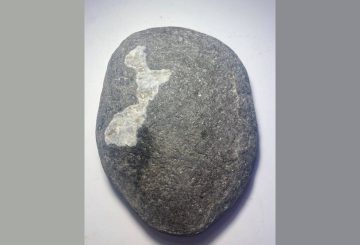유성이라고도 하는 별똥별은 연중 어느 밤에나 볼 수 있습니다.하지만 어떤 밤에는 다른 밤보다 이런 천체 현상을 더 잘 볼 수 있습니다.지구는 태양 주위를 돌면서 혜성과 소행성에서 나오는 먼지와 잔해를 통과합니다.이 파편으로 인해 하늘에 보이는 별똥별의 수가 급격히 늘어나는 “유성우”가 발생합니다.
지금 우리는 핼리 혜성이 남긴 잔해 개울의 외곽을 지나고 있습니다.이로 인해 에타 물병자리 유성우가 생성되는데, 이 유성우는 특히 남반구에서 잘 보입니다.매년 지구가 궤도에서 이 지점에 도달하면 아침 하늘에서 에타 물병자리를 볼 수 있습니다.
올해의 전시회는 특별할 것으로 예상됩니다.소나기가 최고조에 달할 때는 초승달이 뜨기 때문에 동이 트기 몇 시간 전에 하늘이 더욱 어두워지므로 유명한 혜성의 파편이 떨어지는 광경을 감상하기에 안성맞춤입니다.또한 소나기가 평소보다 더 “활발하게” 진행될 수 있다는 힌트도 있습니다.
공식 명칭은 1P/Halley로 명명된 핼리 혜성은 76년마다 태양 주위를 돌며 수천 년 동안 현재의 경로를 따라왔습니다.혜성은 태양계 내부를 통과할 때마다 먼지와 가스를 내뿜습니다.이 먼지는 우주 전체로 퍼져 혜성의 궤도를 따라 넓은 잔해 지대를 형성합니다.
지구는 일 년에 두 번 이 잔해를 통과하기 때문에 잘 알려진 유성우가 두 번 발생합니다.10월에는 양쪽 반구에서 오리오니드 유성우를 볼 수 있습니다.하지만 두 개의 소나기 중 더 좋은 소나기인 에타 물병자리 유성우는 5월 초에 최고조에 달합니다.
에타 물병자리는 올해 최고의 유성우 중 하나이지만 남반구에서 가장 잘 볼 수 있고 적도 북쪽에서는 관측하기 어렵기 때문에 그다지 잘 알려져 있지는 않습니다.
남반구에 사는 사람들이 에타 물병자리를 관찰하기에 가장 좋은 시간은 새벽이 되기 몇 시간 전입니다. 이 때는 하늘에서 유성이 시작된 것으로 보이는 지점인 복사열이 하늘 높이 떠 있을 때입니다.빛이 하늘 높이 올라갈수록 눈에 보이는 유성의 수가 늘어납니다.
올해의 에타 아쿠아리이드 유성우는 특히 특별할 것으로 예상됩니다.초승달 때문에 하늘이 어두워져 유성을 더 쉽게 발견할 수 있을 뿐만 아니라 과학자들은 올해에는 평소보다 훨씬 더 많은 유성을 볼 수 있을 것으로 믿고 있습니다.실제로 일각에서는 2024년의 에타 물병자리 유성우가 21세기를 통틀어 가장 강력할 수 있다는 의견도 있습니다.
유성우의 활동을 예측하는 것은 어려운 일이며, 일부 연구자들은 올해가 그저 “평소와 다름없는 일”일 수도 있다고 생각합니다.어쨌든 조건이 완벽하고 5월 6일 아침이 절정이기 때문에 아름다운 가을 일출을 보기 전에 자연 불꽃놀이를 즐기기 위해 주말 여행을 계획할 수 있는 절호의 기회입니다.




























































